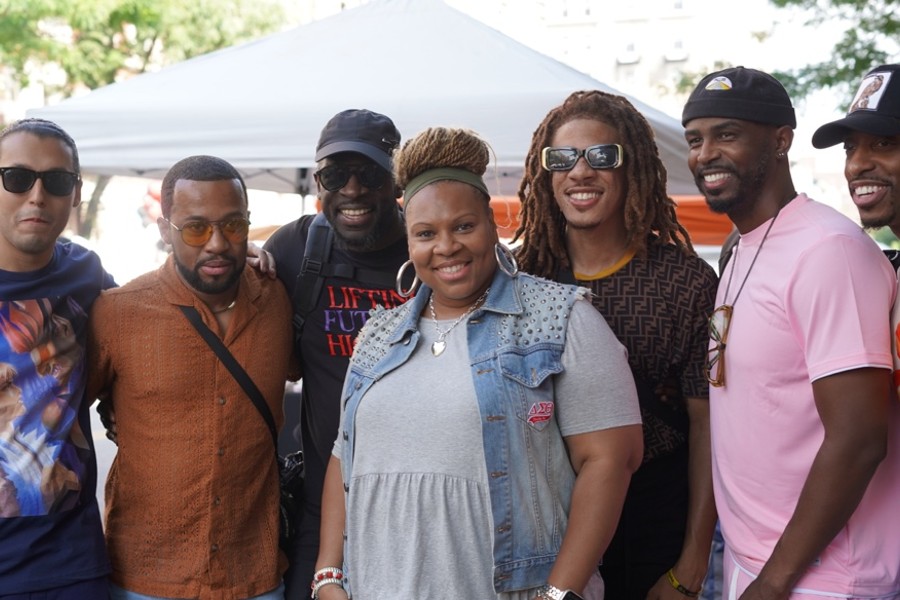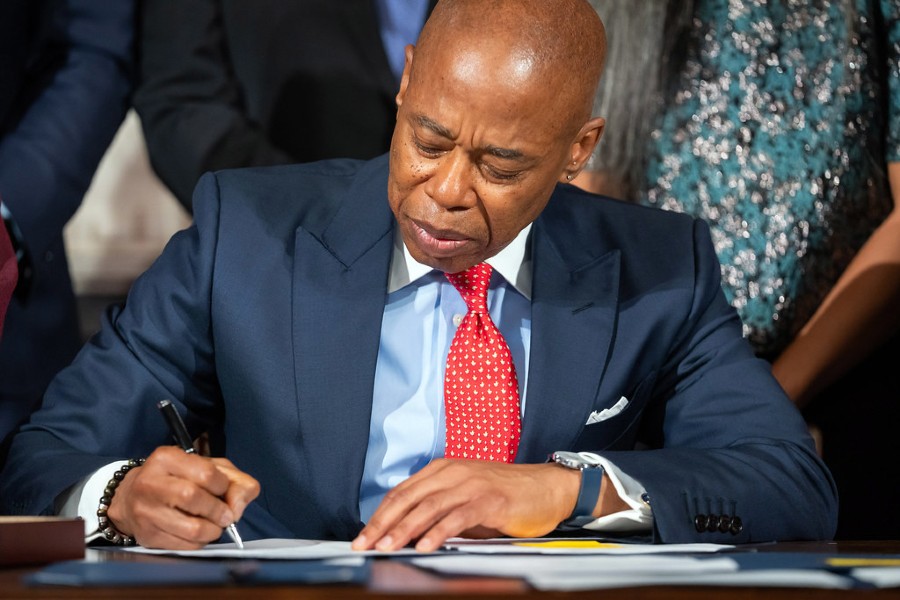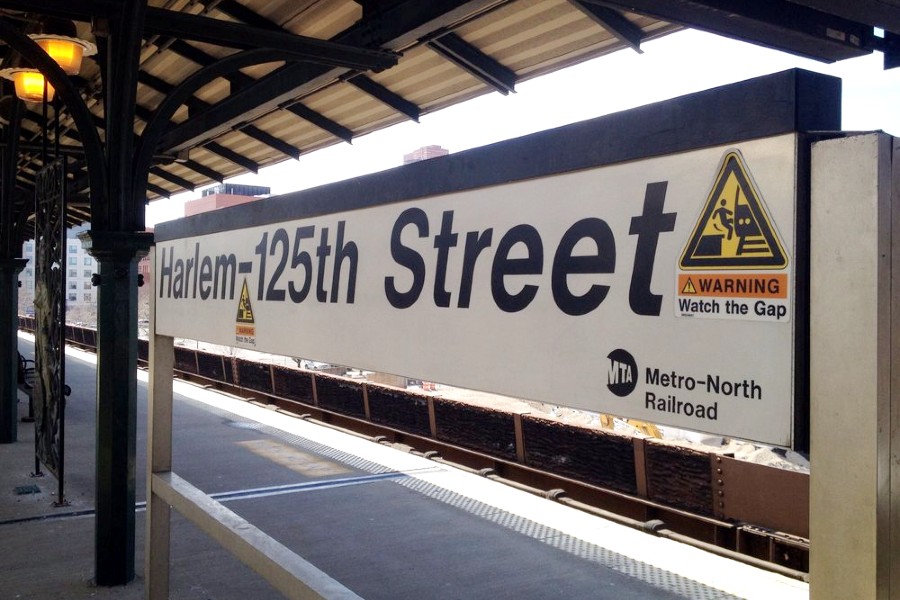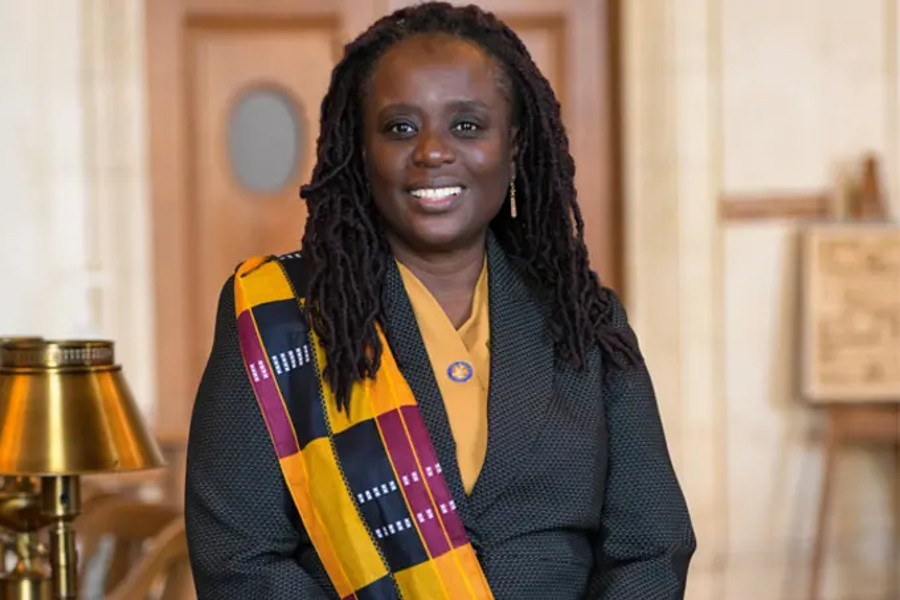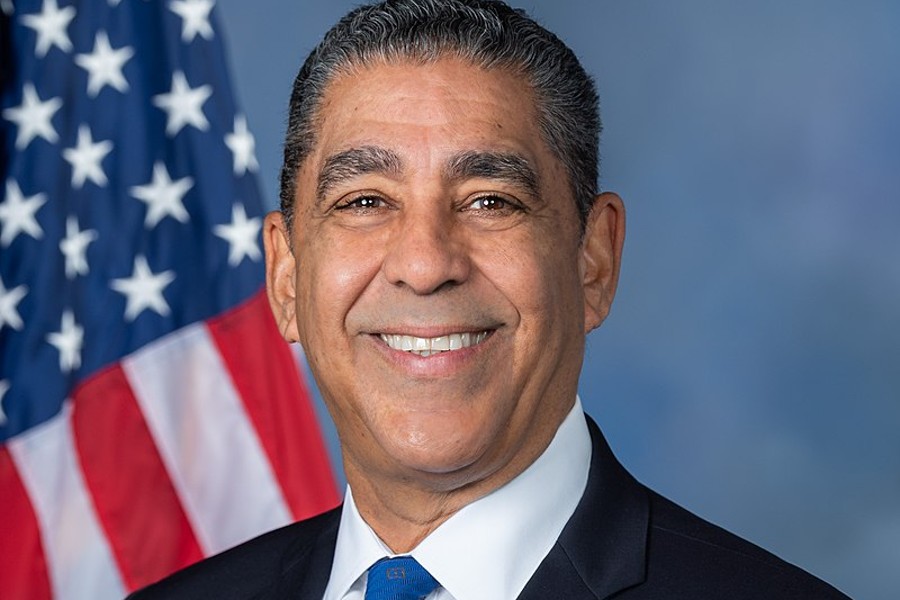Gotham Gazette reports that in four years participatory budgeting has exploded from four to 27 New York City Council districts. With over 51,000 voters casting ballots last cycle to allocate a total of $32 million dollars to projects across the city, New York‘s experiment in direct democracy has quickly become the largest of its kind in North America.
“This is the biggest year of participatory budgeting yet, with 27 Council members asking their constituents to decide how to spend at least $1 million on improvements in their communities…this is truly what democracy is about,” Harlem’s City Council Speaker Melissa Mark-Viverito, an early PB adopter, said at a recent conference on advancing the city’s progressive agenda.
On Monday, October 26, Mark-Viverito and her colleagues will be recognized for their efforts at a ceremony in Manhattan where they will be presented with an innovation award and corresponding $100,000 prize. Last month, Harvard University‘s John F. Kennedy School of Government recognized the growth and impact of participatory budgeting in New York City by awarding the Council the Roy and Lila Ash Innovation Award for Public Engagement in Government.
The award “spotlights…programs that engage all citizens, particularly those from overlooked communities, and that serve as effective models of participatory democracy for other communities throughout the United States,” says Stephen Goldsmith, the Daniel Paul Professor of the Practice of Government and the Director of the Ash Center’s Government Innovation Program.
City Council members decide individually whether to run participatory budgeting in their home districts, and exactly how much of their capital budget allocation to devote to public determination, with $1 million the minimum. Capital projects are infrastructure items, like playgrounds, dog runs, and neighborhood benches. They can also include technology for schools, like laptops.
Under Mark-Viverito, who became Speaker in early 2014, the Council has promoted PB expansion and provided greater support through its central staff to those Council members opting in.
With more than half of the City Council’s 51 members now running the program – and much fanfare around it – it is curious to some why all members haven’t adopted the program. In the latest PB cycle, the city’s fifth, which began this fall, only three additional Council members signed on, increasing participation slightly from the 24 who ran the program last year, when there was a major jump after an election that saw many new, young, and progressive candidates elected.
What’s holding the remaining Council members back? Gotham Gazette sent emails to representatives of six Council members not running PB, only two of whom responded: representatives of Council Members Rory Lancman, of Queens, and Inez Dickens, of Manhattan (both Democrats), explained their rationale.
One common theme in the two responses is that participatory budgeting provides superfluous community input. There are already sufficient avenues of constituent-Council member interaction, and it is already up to Council members to take constituent opinions into consideration when allocating the funding they have to work with.
“Local community boards, which are composed by local residents and constituents, submit to their local council members their capital priorities, projects, and concerns,” wrote Council Member Dickens’ press secretary, Frances Escano. “As the collective voice of the community, their expressed views on the capital projects that need funding provide a significant input on what needs must be addressed.”
Council Member Lancman‘s reply gets at a concern expressed by other Council members Gotham Gazette has spoken to: the significant staff time and energy that PB requires. “Participatory budgeting takes an extraordinary amount of office time and resources for no discernible improvement in outcomes over working through the existing vast civic infrastructure for public participation,” Lancman said in a statement. “My district does not lack for opportunities and vehicles for community engagement, which I’m proud to say my constituents take ample advantage of.”
These responses seem to miss the point, says David Beasley, Communications Director for the Participatory Budgeting Project, the nonprofit that helps run the program. “Participatory budgeting should not replicate the existing power structures,“ he asserted in an interview with Gotham Gazette, “that‘s not what PB is for.“
Nearly 60 percent of PB voters identified as people of color; approximately one in ten were under 18; nearly 30 percent reported an annual household income of $25,000 or below; more than a quarter were born outside of the U.S.; nearly a quarter reported a barrier to voting in regular elections, with one in ten reporting they were not U.S. citizens; and 63 percent identified as female.
According to a press release from Speaker Mark-Viverito’s office, the voter demographics from the most recent PB vote (ballots were cast in April at the end of the 2014-2015 cycle) serve as a shining example of this ideal. Nearly 60 percent of PB voters identified as people of color; approximately one in ten were under 18; nearly 30 percent reported an annual household income of $25,000 or below; more than a quarter were born outside of the U.S.; nearly a quarter reported a barrier to voting in regular elections, with one in ten reporting they were not U.S. citizens; and 63 percent identified as female.
Participatory budgeting allows votes from anyone living in the City Council district at hand,14 years of age and older.
…many voices not present on community boards, PTAs, neighborhood civic associations, et. al. that participatory budgeting incorporates into public discourse.
In their 2014-2015 Participatory Budgeting Report, released Tuesday, October 20, the Urban Justice Center and PBNYC showcase another telling statistic: 51 percent of PB voters, “were not part of a community group or organization.“ That is to say, it is many voices not present on community boards, PTAs, neighborhood civic associations, et. al. that participatory budgeting incorporates into public discourse. In Council Member Carlos Menchaca‘s Brooklyn district, to give one example, more monolingual, non-English speakers voted for a PB project than did in the general election when Menchaca was chosen in 2013.
The direct democracy, ability to shape one’s neighborhood, and low barrier to entry seem to be the cause of the participation outlined above.
Through a series of public assemblies, residents work with elected officials over a period of eight months to identify neighborhood concerns, create projects to address them, and put the ones with the most interest to a vote.
The practice culminates when district residents fill out ballots to allocate at least $1 million in capital funding toward proposals developed by the community to meet local needs. Absent much of the typical bureaucracy of community politics, participatory budgeting lures previously dormant New Yorkers into the public sphere.
PBNYC, the umbrella organization uniting the City Council, the Participatory Budgeting Project, the outreach nonprofit Community Voices Heard, and 63 community-based organizations across the city, oversees the entire operation; and the coalition continues to launch new ways to wrangle more participants. The organization‘s recently launched “Ideas Map“ is one of their major additions for the just-started 2015-2016 cycle. Anybody who wants to can go online and submit their capital funding idea for their district, specifying the project’s location on the digital outline of NYC. (A tip: participating PB Council districts are lit up, but eager residents can post suggestions in non-PB districts as well. Perhaps a nudge toward more Council enrollment.)
Council Member Jumaane Williams of Brooklyn let on in an interview with Gotham Gazette that Council members‘ decisions to not run PB may be about more than already getting “significant input” from their constituents. Confining community recommendations to established local channels is a way for Council Members to retain their power, Williams said. While legislators can largely choose to reject suggestions from community boards, participatory budgeting completely cedes a portion of a Council member‘s budget to popular vote.
“It’s one thing to receive input, it’s another thing for someone to actually vote on it and for it to be a binding decision,” said Williams, whose district 45 residents last yearelected to spend over $300,000 on schools including classroom computers, smartboards, and renovated bathrooms.
Council Member Menchaca – whose district 38 constituents cast over 6,000 ballots last year, also allocating funds for a litany of school upgrades in addition to outdoor fitness equipment for Sunset Park – takes Williams’ point a step further. Menchaca sees resistance to PB as stemming from an overly cautious, controlling, and outdated form of governing.
“One of the main things that I get in resistance from members or other people…is the fallacy that I am relinquishing power,” Menchaca says, “because I got elected to make these decisions – what am I doing giving it back to the people?…I think that‘s just an old-school way of understanding the role of government and the role of people and the role of democracy, a true participatory democracy that empowers people in decision making.“
While Menchaca is clearly a true-believer, and puts his money where his mouth is, other Council members run the program, but to a more limited degree.
“You may miss some very good projects…if there is no other way to get some things funded,” says Williams, acknowledging that not everything on a PB ballot will get funded.
Lancman‘s other reason for not participating in PB–that it requires “an extraordinary amount of office time and resources for no discernible improvement in outcomes“–may hold the most weight. It is something that other Council members have expressed concerns about in off-the-record conversations.
The $32 million spent last year on participatory budgeting projects represents just .4 percent of the average $7.9 billion spent on city capital projects annually (2003-2012), according to an IBO report. Yet implementing a robust and dedicated PB program drains Council members of a significant amount of effort and resources – during the height of PB season, Council members often have to dedicate one staff member (of units that usually only run about five deep) to PB full-time, with others chipping in part of their time.
“It is a commitment,” says Williams, “there’s no ifs, ands, or buts about it. You jump in, you can’t really jump partially in…It touches most of my staff in different ways.“
Menchaca also acknowledges the effort required. “This has to be your priority,” he says, “Everything is built around PB in [my] office. It is at the core of what I do.” Even with this type of attention the council member says, he needs more resources. “I could use another five people to help staff the PB portion of my operations.“
Budget info, as seen in the IBO report, shows that over the course of three years from 2013-2016, Council members are committed to spending $1.765 billion in capital funds. Divided by 51 Council members (though the money is not evenly divided), this comes out to about $34.6 million each over the course of those four fiscal years, or $8.65 million per Council member per year. In that context, $1-2 million toward participatory budgeting in a given year is fairly significant.
The benefits of participatory budgeting also extend outside of its explicit function. The most notable of these benefits, according to the Urban Justice Center report, include better informed policy decisions, increased resident trust in government, and more cohesive community bonds.
On a practical level, needs revealed by the participatory budgeting process can inform and direct further non-PB government spending. In its 2013-2014 report, the Urban Justice Center found that seven out of ten Council members running PB programs used their capital expense funds left over from the PB process to implement projects suggested during PB that did not garner enough support to be selected by constituents.
The same report also suggests how participatory budgeting has the power to affect city-wide change. Following a flood of PB proposals to renovate decrepit school bathrooms, the DOE elected to dedicate $100 million to repair deteriorated lavatories – $50 million more than it had promised. The increase in funding came out to three times the amount spent on all PB-designated capital projects that year.
On top of this, Council members acquire valuable, new community contacts through participatory budgeting. “I‘m developing social networks that didn‘t exist before…and…I‘m utilizing the networks that I‘m building here to deal with the other issues outside of PB,” says Menchaca.
As an example, he cites a recently-made connection with an employee of BioBAT, a bio-tech incubator, “maybe I can get her involved in organizing small-businesses if there is an infrastructure issue,” he said.
The benefits of these new networks go both ways, too, as the Urban Justice Center report found that by working with Council members and city agencies to create and implement capital projects, community members develop greater trust in government. Confident that Council members will be responsive to their input, residents feel free to reach out to their representatives if an issue comes up – even outside PB.
In one case detailed by Beasley, of the Participatory Budgeting Project, this past year Council Member Menchaca was considering a large development project in the middle of a local park. Community members caught wind of the project and pushed back hard. They insisted it would cost too much money. According to Beasley, Menchaca paused, reevaluated the project and said ‘I think you‘re right. We have this money in the budget; what should we spend it on to make this park better?’
It is this type of empowerment that Council Member Williams was seeking when he first started his PB program five years ago. “The most important thing that I do is probably pass the budget and that’s the thing that my constituents understand the least,” Williams told Gotham Gazette. “[Participatory Budgeting] was a good meld of empowering and allowing people to get involved in the budget process. It allows them to get their hands dirty.”
Increased public awareness of discretionary funds is something the city could use too. Also known as “member items,“ discretionary funds have historically been one of the most abused pots of City Council money. It was no coincidence that Speaker Mark-Viverito‘s decision to provide centralized funding to PB came in conjunction with several rules making discretionary funds more equitable and transparent.
This summer, Council Member Brad Lander of Brooklyn, also an early PB adopter,launched an interactive map that tracks capital projects in his district, including those funded through PB and not. Lander told Gotham Gazette that “the long-term answers is a citywide system that tracks all capital projects” so that constituents can see the progress of government-funded efforts.
The first years of PBNYC saw expansion by just a few districts per year after the initial class of four. It was only in the fourth year, when, after an election and under Mark-Viverito, the City Council dedicated centralized resources to PB and the number jumped by 14.
In this sense, though, David Beasley doesn‘t see this year’s three district growth as anything abnormal.
Participatory Budgeting, “hasn’t had time to stabilize and really set in,” he said. “It is still almost brand new…For some people PB is an obvious answer, for others they want to see that it works.“
He‘s quick to add, “we think it‘s been proven through the evaluations from the Urban Justice Center…but we‘ll see how the reports continue to go.”
Council Member Menchaca is convinced and sees the growth of PB as inevitable, but that it might take just a couple more years. “I think we need to elect new people,” Menchaca said regarding those who don’t run the program in their districts, “[PB] becomes a political strategy for empowerment.“
Gensis-Muelens Dixon, a 13-year-old from the Flatbush area and a constituent of Council Member Williams, is feeling empowered. Together with his mother Taja Dixon, Co-Chair of District 45 Participatory Budgeting, he wants to secure funding to turn an empty plot of land into a community garden.
The pair proposed their idea at Williams’ inaugural PB assembly, which Gotham Gazette attended. Their project aims to supply fresh fruits and vegetables, as well as foster the same community spirit the two have come to appreciate through participatory budgeting. As the meeting came to an end, Gensis gave a quick word to Gotham Gazette about his experience in the two years he and his mother have been participating in PB.
“It is really amazing how much people think about their community,” he said. “Usually, in this area at least, you would think that some people just don’t care and to see that this many people care about these little things in their community is inspiring.”
PB voting in East Harlem, photo via PB NYC
Become a Harlem Insider!
By submitting this form, you are consenting to receive marketing emails from: Harlem World Magazine, 2521 1/2 west 42nd street, Los Angeles, CA, 90008, https://www.harlemworldmagazine.com. You can revoke your consent to receive emails at any time by using the SafeUnsubscribe® link, found at the bottom of every email. Emails are serviced by Constant Contact





